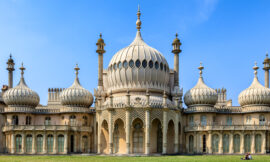The Waterloo Monument in Jedburgh is a significant historical landmark that stands proudly on Peniel Heugh, a hill located about 5 miles from the town. This impressive structure, erected to commemorate the Battle of Waterloo, serves as a reminder of the pivotal moment in European history when the forces of the Seventh Coalition, led by the Duke of Wellington, defeated Napoleon Bonaparte in 1815.
Historical Background
The Battle of Waterloo, fought on June 18, 1815, near Brussels in modern-day Belgium, marked the end of the Napoleonic Wars. This decisive battle saw the defeat of Napoleon Bonaparte, leading to his abdication and exile. The victory was a significant moment for the United Kingdom and its allies, symbolizing the restoration of peace and stability in Europe after years of conflict.
Erection of the Monument
The Waterloo Monument was commissioned by the 6th Marquess of Lothian, who wanted to honor the bravery and sacrifice of those who fought in the battle. The construction of the monument began in 1817, just two years after the battle, and was completed in 1824. Designed by the Scottish architect Archibald Elliot, the monument stands as a testament to the architectural style and commemorative spirit of the early 19th century.
Architectural Features
Standing at approximately 150 feet (46 meters) tall, the Waterloo Monument is an imposing structure that can be seen from miles around. It is built in the form of a massive column, reflecting the neoclassical design principles popular at the time. The column is crowned with a statue of the Duke of Wellington, symbolizing his leadership and the victory achieved under his command.
The base of the monument features inscriptions and plaques that detail the events of the Battle of Waterloo and pay tribute to the soldiers who fought and died there. The craftsmanship of the stonework and the detailed carvings add to the monument’s grandeur and historical significance.
The Surrounding Area
The monument is situated on Peniel Heugh, a hill that offers stunning panoramic views of the surrounding landscape. The location was chosen not only for its visibility but also for its natural beauty, providing a fitting backdrop for such a significant memorial. The area around the monument is popular with hikers and nature enthusiasts who come to enjoy the scenic trails and the serene environment.
Visiting the Monument
Visiting the Waterloo Monument is a rewarding experience for those interested in history, architecture, and the natural beauty of the Scottish Borders. The site is accessible by a short walk from a nearby car park, with well-maintained paths leading up to the monument. Information boards along the way provide historical context and details about the monument and the Battle of Waterloo.
For those willing to climb to the top of the monument, the reward is a breathtaking view of the surrounding countryside, including the rolling hills of the Borders and, on a clear day, the distant Cheviot Hills. The climb involves ascending a spiral staircase inside the column, which adds an element of adventure to the visit.
Cultural and Historical Impact
The Waterloo Monument is more than just a commemorative structure; it is a symbol of the enduring legacy of the Napoleonic Wars and the significance of the Battle of Waterloo in shaping European history. It stands as a reminder of the sacrifices made by those who fought for peace and stability and serves as an educational resource for those looking to understand this pivotal period.
The monument also plays a role in the cultural identity of the Jedburgh area, contributing to local tourism and community pride. It is a site for remembrance ceremonies and historical tours, connecting present-day visitors with the events of the past.
Conclusion
The Waterloo Monument in Jedburgh is a towering tribute to a defining moment in European history. Its architectural elegance, historical significance, and stunning location make it a must-visit site for anyone exploring the Scottish Borders. As it stands watch over the landscape, the monument continues to honor the memory of those who fought at Waterloo and serves as a lasting symbol of peace and victory.



